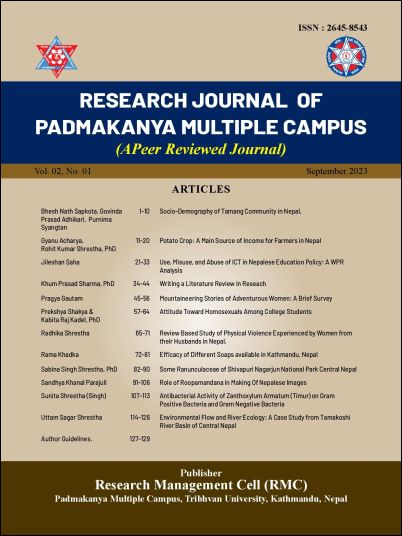Role of Roopamandana in Making of Nepalese Images
DOI:
https://doi.org/10.3126/rjpkmc.v2i1.62998Keywords:
Amritghata, Angul- tala, Devetar, Strimukha, VidhanaAbstract
Kathmandu valley has plenty of sculptural art. Images since an early period have been made following vidhana or pratima lakshan. ‘An image prepared without following vidhana is unfit for worship, says sastras and Puranas’ (Khanal, B.S.2075.p.15). Vidhana is a guideline for making images. There are several texts and Puranas describing vidhana. Roopmandana was written by Sutradhar Mandana during the 12th century describing pratima lakshana of several dieties. Images of Nepal from 3rd century BC till the end of 17th/18th century CE have their specific identification with gradual inclining changes in their features from early period un wards to Licchavi, early medieval and medieval period. However, the theme has always been same. In this context, how far the pratima lakshana described in Roopamandana has influenced Nepalese images? In what ways and how are they implemented in Nepalese images? The answer to these questions have been tried to be traced on the basis of through detail review of Roopamandana. Likewise, survey of images through purposive sampling, collection of epigraphic records and photographs are used in this study as a primary source. Findings of the facts are analyzed in a descriptive manner. Through various references, it has been revealed in this research that Roopamanda was the best-selected text of vidhana for making Nepalese images and a religious code for continuation or disposal of images in case of breaking. It has been found to be completely implemented in most of the images related to Vaishnava during medieval period, few of them have been found to be made through partial implementation and the rest by merging the vidhanas mentioned in several texts.




